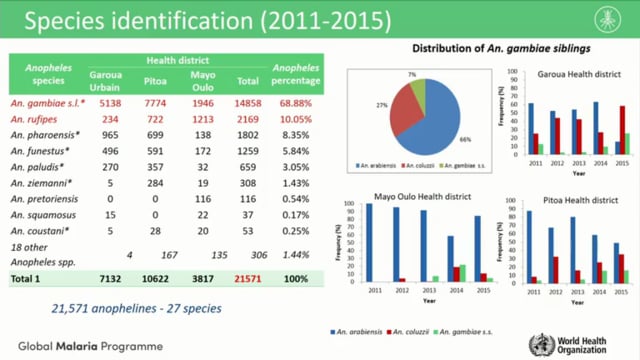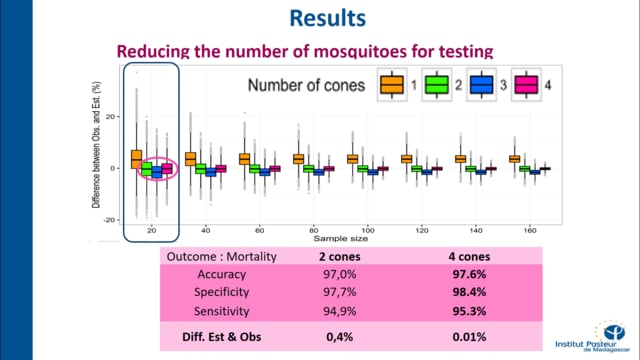Last Updated: 18/06/2024
Assessing the impact of a new class of insecticide treated net (Interceptor G2) on malaria vectors population dynamics, ecology and behaviours in the Cascades Region of Burkina Faso
Objectives
To assess for chlorfenapyr-resistance, its potential mechanisms and the impact of IG2 on Anopheles gambiae s.l. demography, behaviours (resting and biting) and malaria transmission potential by combining field and laboratory works in the Cascades Region.
National Center for Research and Training for Malaria (CNRFP) Burkina Faso, Burkina Faso
Long-Lasting Insecticide-Treated Nets (ITNs) are the most successful method for malaria vector control in Africa. Growing evidence indicates changes in mosquito vector biting and resting behaviours in several African settings where high ITN coverage has been achieved. These combined with growing resistance to pyrethroids, the insecticide class used in all nets, can reduce intervention success. This is the case in Burkina Faso where high outdoor biting and pyrethroid resistance is reducing the efficacy of standard ITNs. In response to this Burkina Faso, adopted the newly developed ‘Next Generation Nets’ in its 2019 mass distribution campaign, becoming the first country to deploy Interceptor G2 (IG2), a net combining a pyrethroid with chlorfenapyr, an insecticide that should be effective against pyrethroid-resistant vectors. However, initial results from the laboratory and semi-field studies on mosquitoes from the Cascades Region of Burkina Faso indicate much lower mortalities with IG2 nets than expected from earlier trials raising concerns that local vectors may have already developed resistance to this insecticide class.
May 2021 — Apr 2024
$401,608

